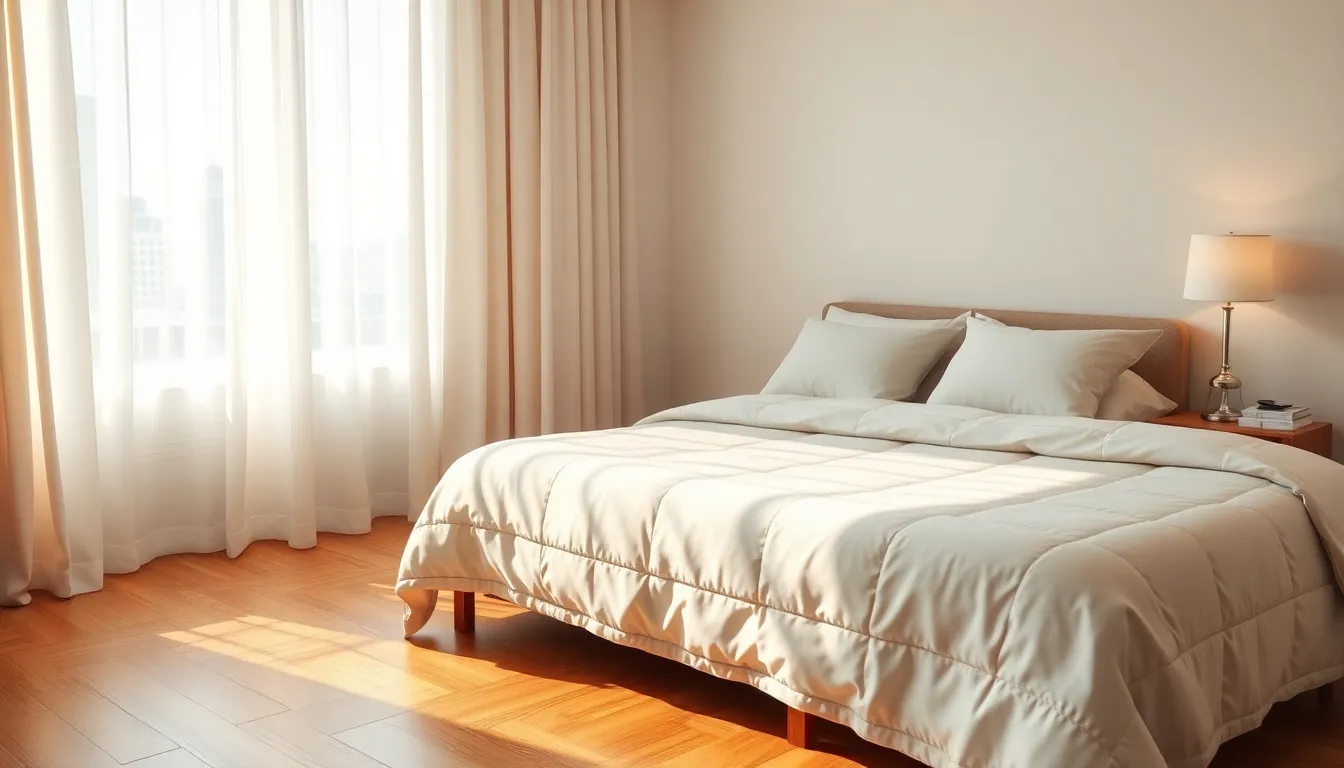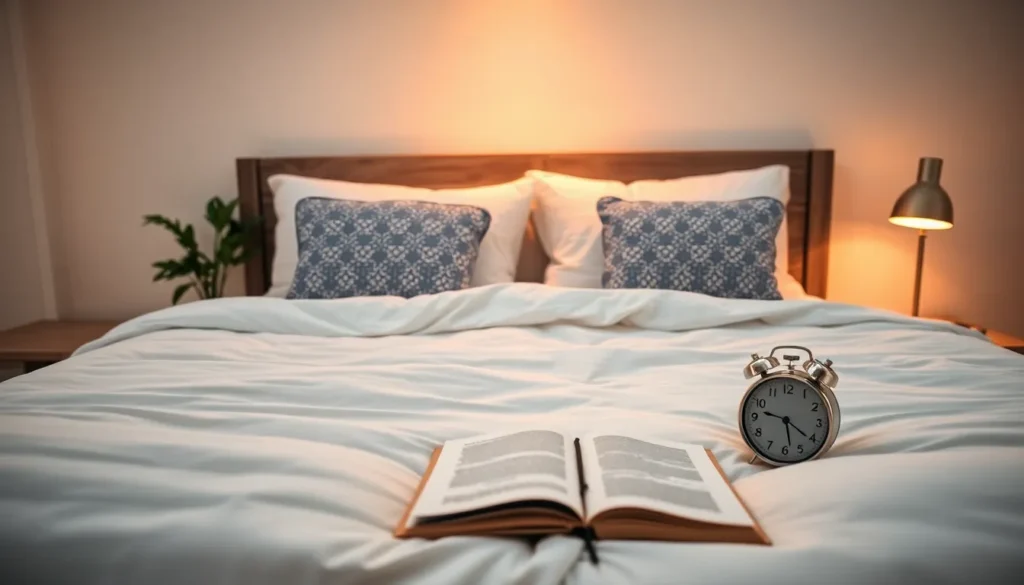Ever tried to curl up for a good night’s sleep only to find that bed feels more like a wrestling ring? Let’s face it, whether it’s a too-firm mattress, scratchy sheets, or that weird lump that seems to be a permanent resident under your back, finding comfort in bed can sometimes feel like hunting for treasure in a junkyard. But fret not. Understanding how to get comfortable in bed is not only essential for a good night’s sleep but also for waking up feeling like a million bucks. Sit tight, because we’re diving into the cozy world of sleep comfort, and trust me, bed time will never be the same again.
Table of Contents
ToggleUnderstanding The Importance Of Comfort In Bed

When it comes to getting quality rest, comfort plays a starring role. Think about it: sleep is vital for mental clarity, mood regulation, and overall health. If you’re tossing and turning all night, it can lead to irritability during the day, an absolute downer for anyone. Research even backs it up. According to the National Sleep Foundation, a comfortable sleep environment contributes significantly to the quality of sleep, making it essential for overall wellbeing. Simply put, when you prioritize comfort in your bed, you elevate not just your sleep, but your entire day-to-day experience.
Choosing The Right Mattress
A mattress isn’t just a big pillow: it’s the foundation of a great night’s sleep. Start by considering personal preferences. Do you prefer something soft and plush, or firm and supportive? Memory foam mattresses provide contouring support and can cradle the body in a way that relieves pressure points. On the other hand, innerspring mattresses are more traditional and can offer a bouncier feel. It’s all about personal taste.
Also, think about your sleeping position. Side sleepers might need a softer surface to accommodate shoulder and hip pressure, while back and stomach sleepers usually require a firmer base to keep the spine aligned. Trying out mattresses in-store can be beneficial. Spend at least 10-15 minutes lying down in your preferred position to find what truly works.
Selecting Ideal Bedding
Next, let’s talk about bedding. The right sheets can make a world of difference. Look for materials that feel luxurious against the skin, like 100% cotton or bamboo. These fabrics are breathable and help regulate temperature, crucial for both hot and cold sleepers.
Consider thread count, too. Sheets with a higher thread count often feel softer and more durable, but bear in mind that quality doesn’t always correlate with higher numbers.
Don’t forget about blankets and comforters. Lightweight options are great for summer, while heavier ones can provide that snuggly feel during winter. What about pillows? The right pillow supports the neck and head, ensuring proper alignment during sleep. Experiment with different types, memory foam, down, or gel options, to find the one that helps you drift off into dreamland.
Creating A Cozy Sleep Environment
Your bedroom sets the mood for sleep. Start by decluttering your space. A clean, organized environment can promote peace of mind and make a big difference in how inviting your bed feels.
Lighting plays a crucial role when cultivating a cozy atmosphere. Consider dimming your lights in the evening or using soft-colored bulbs. Blackout curtains can also be a game-changer, blocking out unsettling streetlights or early morning sun.
Don’t underestimate the power of temperature, either. A cool room, ideally between 60-67°F, tends to help with falling asleep quicker and improves overall sleep quality. Use a fan, adjust the thermostat, or even try a quality air purifier to keep the air fresh and comfortable.
Establishing A Relaxing Bedtime Routine
A calming bedtime routine can signal your body that it’s time to wind down. Start by setting a specific bedtime and sticking to it, even on weekends. Consistency is key. Activities like reading, meditating, or listening to soft music can help ease the transition from wakefulness to sleepiness.
Limit screen time at least an hour before bed. The blue light emitted from devices can interfere with the production of melatonin, the hormone responsible for regulating sleep cycles. Instead, reach for a book or maybe have a warm cup of herbal tea to set the mood for slumber.
Adjusting Your Sleep Position
Finding the right sleep position can enhance comfort levels significantly. Side sleeping, back sleeping, and stomach sleeping each have pros and cons. Side sleepers might benefit from a knee pillow while stomach sleepers should consider a thinner pillow to maintain neck alignment.
Tips For Enhancing Comfort While Sleeping
Utilizing a body pillow can also be a game changer by providing support to different areas. Besides, ensure that your head isn’t propped too high or low but is in line with your spine, promoting better alignment.
Addressing Common Sleep Disruptors
Be mindful of potential disruptors like snoring partners, pets, or overly noisy environments. White noise machines or earplugs might help. Experiment with different sleeping arrangements to discover the best fit.




